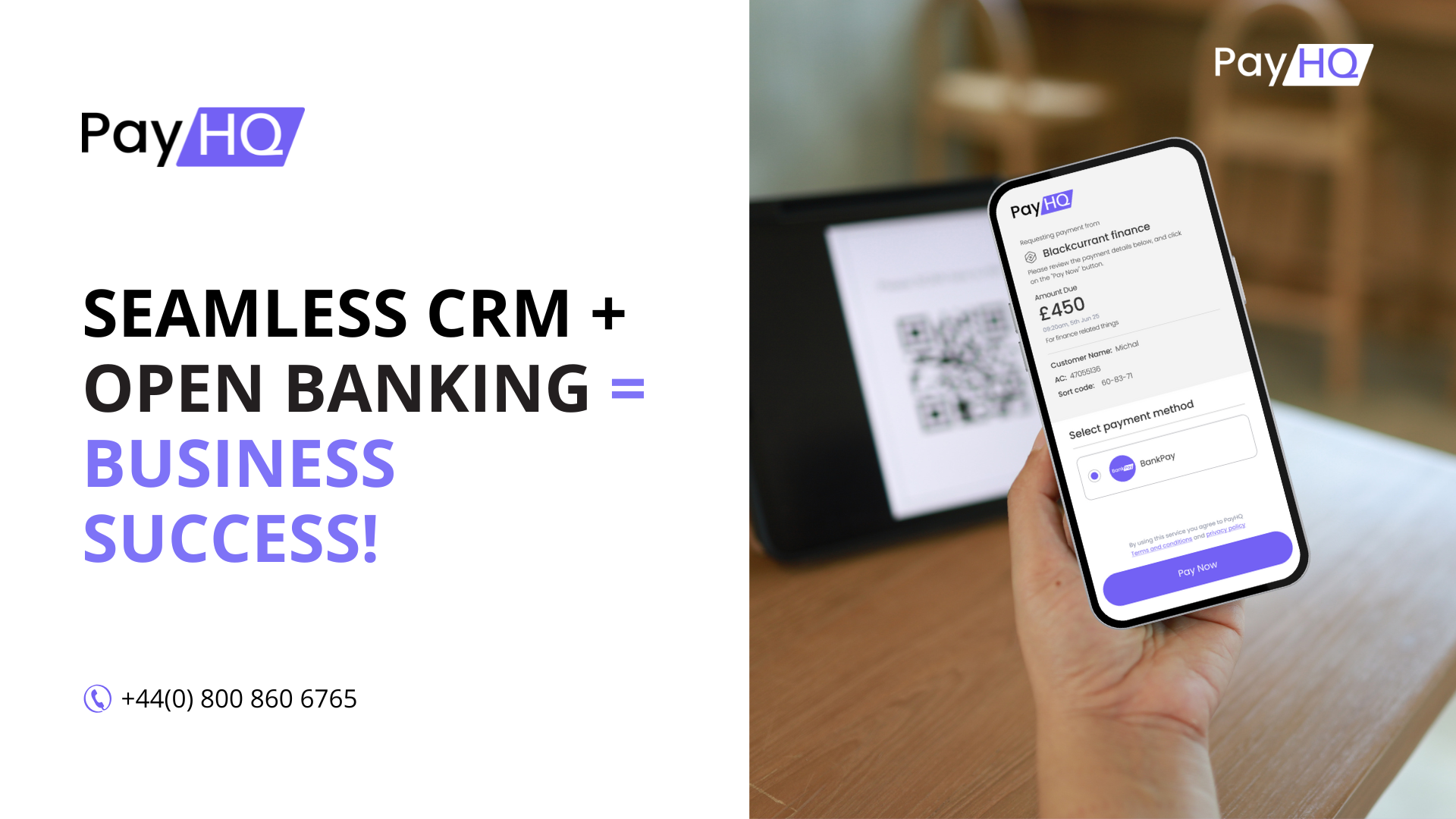How Integrating Open Banking into CRM and Business Software Enhances Efficiency and Cost Savings
How Integrating Open Banking into CRM and Business Software Enhances Efficiency and Cost Savings

The Role of Open Banking in CRM and Business Software
In today’s competitive business environment, companies are constantly seeking ways to improve customer interactions, optimise workflows, and reduce costs. One of the most transformative advancements driving this change is open banking. By integrating Payment Initiation Services (PIS) and Account Information Services (AIS) into Customer Relationship Management (CRM) software and other business platforms, companies can streamline financial processes, enhance payment efficiency, and improve data-driven decision-making.
This article explores how open banking can revolutionise CRM systems, business software, and other platforms, providing businesses with real-time financial data, embedded payment solutions, and cost-saving opportunities.
What is Open Banking and How Does It Fit into CRM and Business Software?
Open banking enables businesses to connect their CRM and other business platforms directly with bank accounts via secure APIs, offering real-time access to financial data and seamless payment initiation.
- Account Information Services (AIS): AIS allows businesses to automatically retrieve financial data from multiple bank accounts, offering a complete financial overview to inform customer interactions, credit assessments, and transaction tracking.
- Payment Initiation Services (PIS): PIS enables businesses to initiate direct bank-to-bank payments from within their CRM or business software, bypassing card networks and reducing transaction fees.
By integrating open banking into CRM, ERP, invoicing software, and e-commerce platforms, businesses can automate reconciliations, streamline payment processes, and enhance customer experiences.
Key Benefits of Open Banking in CRM and Business Software
- Real-Time Customer Insights for Smarter Decision-Making
- AIS integration allows businesses to view customer financial data directly within their CRM.
- Enables better credit risk analysis and tailored payment plans based on real-time financial information.
- Reduces reliance on outdated financial reports, leading to more accurate decision-making.
Statistic: Businesses leveraging real-time financial insights through AIS see a 30% increase in customer retention (Source: Open Banking Implementation Entity, UK).
- Faster, Cheaper, and More Secure Payments with PIS
- Eliminates card processing fees, reducing costs by up to 90%.
- Instant bank transfers, ensuring payments are completed quickly and efficiently.
- Enhanced security with bank-grade authentication, reducing fraud and chargebacks.
Statistic: Businesses using open banking payments cut their transaction costs by an average of £15,000 annually (Source: UK Finance).
- Automating Reconciliations for CRM and Accounting Efficiency
- Seamless transaction matching between customer records and financial data.
- Reduces manual errors, administrative workload, and reconciliation time.
- Provides finance teams with real-time payment tracking within CRM software.
Statistic: Companies automating reconciliations with open banking reduce financial admin time by 65% (Source: Deloitte UK).
- Embedding Payment Links into CRM and Invoicing Software
- Businesses can generate instant payment links directly within CRM-generated invoices.
- Customers can pay directly from their bank accounts in just one click, reducing delays and improving cash flow.
- Reduces administrative efforts spent following up on late payments.
Statistic: Businesses embedding payment links in CRM invoices experience a 75% faster payment collection rate (Source: PayUK).
- Improved Compliance and Security
- Strong customer authentication (SCA) ensures high security and fraud protection.
- Real-time financial reporting simplifies regulatory compliance for businesses.
- Protects customer data by reducing the need for storing sensitive card details.
Industries and Software That Benefit from Open Banking Integration
- CRM and Sales Management Software
- Examples: Salesforce, HubSpot, Zoho CRM.
- Automate financial insights, customer transactions, and payment processing within CRM workflows.
- Enterprise Resource Planning (ERP) Software
- Examples: SAP, Microsoft Dynamics 365, NetSuite.
- Improves real-time cash flow tracking, financial forecasting, and automated bank reconciliation.
- Invoicing and Billing Platforms
- Examples: QuickBooks, Xero, FreshBooks.
- Streamlines invoice payments with embedded bank payment links, reducing late payments.
- E-Commerce and Subscription Platforms
- Examples: Shopify, WooCommerce, Magento, Stripe Billing.
- Enables frictionless checkout experiences with direct bank-to-bank payments, reducing cart abandonment.
- Financial Services and Lending Platforms
- Examples: Lending platforms and alternative finance providers.
- Use AIS for instant creditworthiness assessments and automated loan approvals.
How to Integrate Open Banking into CRM and Business Software
When selecting an open banking solution for CRM, ERP, or invoicing software, businesses should consider:
✔ Seamless API Integration – Ensure the provider integrates with existing platforms like Salesforce, SAP, or Xero.
✔ Multi-Bank Connectivity – Choose a provider that connects with major UK banks for wide accessibility.
✔ Security & Compliance – Opt for FCA-regulated providers with robust security features.
✔ Cost & Efficiency – Compare transaction fees and automation features to maximise ROI.
✔ Customer Support & Reliability – Select a provider with strong support services for troubleshooting and implementation.
✅ 30% increase in customer retention with financial data integration.
✅ Up to 90% reduction in payment processing costs.
✅ 65% less time spent on manual reconciliations.
✅ 75% faster invoice payment collections with embedded bank payment links.
As businesses across industries continue to digitise operations, integrating open banking into CRM and business platforms will be a key driver of financial efficiency and customer satisfaction.
Now is the time to adopt open banking solutions and stay ahead in the competitive market.


